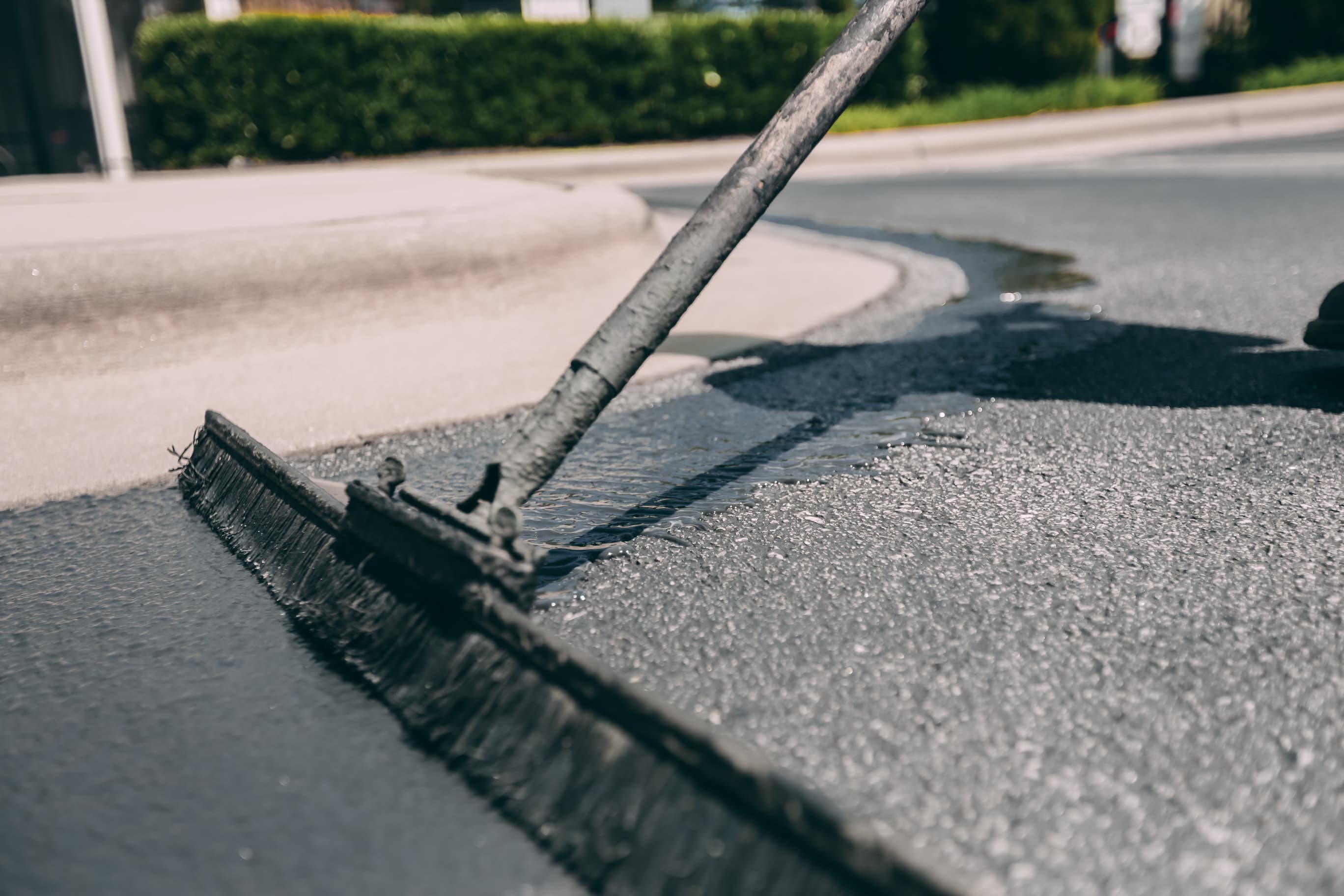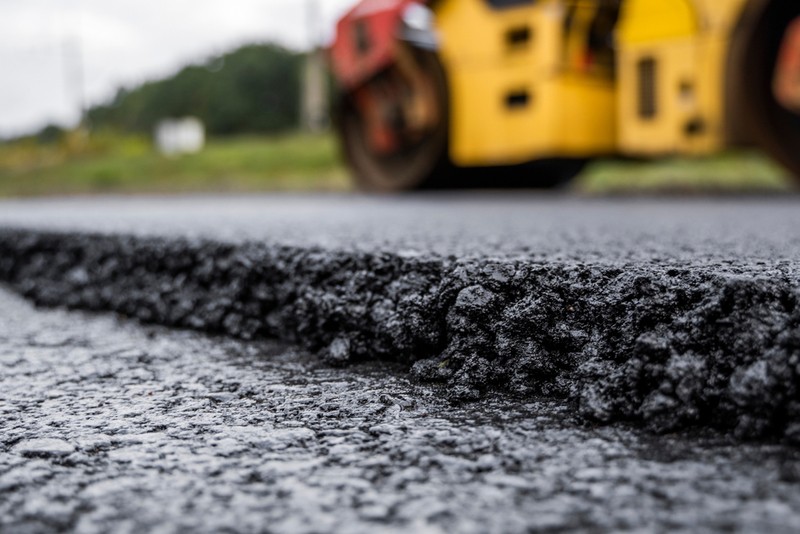Extend Pavement Lifespan: Cutting-edge Cold Mix Asphalt Sealing
Extend Pavement Lifespan: Cutting-edge Cold Mix Asphalt Sealing
Blog Article
Cold Mix Asphalt Vs. Hot Mix Asphalt: Which Is Right for You?

Structure Distinctions
Cold mix and warm mix asphalts differ substantially in their structure, with unique attributes that impact their performance and applications. Cold mix asphalt is created by emulsifying the asphalt binder with water and an emulsifying agent before blending it with aggregate. This approach enables the asphalt to be convenient at lower temperatures, making it ideal for short-lived fixings and for use in chillier climate condition. Warm mix asphalt, on the various other hand, is made at heats, commonly in between 300-350 ° F, which helps to accomplish better compaction and an extra durable end product. The hot mix asphalt manufacturing process includes warming the aggregate and asphalt binder separately before combining them at the asphalt plant.
Additionally, chilly mix asphalt has a tendency to be much less thick and more versatile than warm mix asphalt. This adaptability makes it far better fit for locations with higher levels of activity, such as driveways or roads with heavy traffic. In comparison, warm mix asphalt is understood for its high sturdiness and resistance to rutting and fracturing, making it a preferred option for highways and high-traffic roadways where long life is critical.
Installment Process Variances
The procedure of mounting chilly mix and warm mix asphalt shows significant variations in their procedures and requirements. Cold mix asphalt, being an extra flexible material, can be applied straight from the bag or container onto the split or damaged area. It calls for marginal preparation work, such as cleaning up the area and condensing the cold mix with hand devices. This makes it a hassle-free option for short-term and quick solutions. On the other hand, hot mix asphalt requires a more intricate installment procedure. It involves heating up the blend to high temperature levels before laying it down on a properly ready base. The prep work consists of compacting the base, using a tack coat, and utilizing heavy equipment like pavers and compactors for a sturdy and smooth surface. As a result of the heating demands, hot mix asphalt setups are typically executed by experts with customized equipment, guaranteeing a more structurally audio and permanent outcome.
Resilience and Longevity Elements
When considering asphalt alternatives, longevity and longevity are crucial aspects to assess for lasting pavement efficiency. Warm mix asphalt (HMA) is recognized for its remarkable longevity and longevity.
In regards to long life, HMA normally outshines CMA due to its premium stamina and resistance homes. HMA sidewalks have a longer life span, requiring much less frequent repair services and maintenance, which can convert to set you back savings in the long run. Furthermore, HMA pavements are a lot more conveniently customizable to fulfill particular project needs, even more improving their resilience.
Cost Factors To Consider
Taking into visit this web-site consideration the monetary effects is a vital element when evaluating the choice in between hot mix asphalt (HMA) and cold mix asphalt (CMA) for sidewalk projects. While the initial cost of warm mix asphalt is typically higher than that of chilly mix asphalt, HMA usually provides a more cost-effective solution in the lengthy run due to its exceptional longevity and long life.
In addition to material expenses, it's crucial to think about the expenses associated with installation and maintenance when contrasting HMA and CMA. HMA usually calls for specific tools and experienced labor for appropriate installment, which can impact general project prices. Alternatively, CMA is much easier to go to this website deal with and can often be used making use of easier strategies, possibly lowering setup expenditures. Eventually, the decision between HMA and CMA should think about not just the first cost however also the long-lasting economic implications to figure out the most economical alternative for the details pavement project.
Environmental Influence Comparison
Contrast of the environmental influences in between warm mix asphalt (HMA) and cool mix asphalt (CMA) exposes distinctive distinctions in sustainability methods. HMA manufacturing calls for heats, causing raised power intake and greenhouse gas exhausts. The process likewise launches unstable natural compounds (VOCs) and dangerous air pollutants (HAPs) into the atmosphere. In contrast, CMA is created and used at lower temperature levels, lowering power use and discharges dramatically. The lower manufacturing temperatures of CMA result in lowered gas intake and reduced levels of carbon dioxide exhausts, making it a much more environmentally friendly choice.
Moreover, the use of CMA frequently involves reusing existing asphalt pavement, advertising source preservation and minimizing the amount of waste sent out to land fills. By deciding for CMA over HMA, roadway building and construction projects can add favorably to environmental conservation efforts.
Conclusion
To conclude, the option between chilly mix asphalt (CMA) and hot mix asphalt (HMA) depends upon various elements such as composition, setup procedure, longevity, long life, cost, and ecological influence. asphalt repair. While CMA uses a quick and cost-effective option for minor repairs, HMA makes certain remarkable longevity and longevity for rush hour areas. Think about these elements thoroughly to other figure out which kind of asphalt is the ideal selection for your paving needs

Thinking about the monetary ramifications is a vital facet when reviewing the choice in between warm mix asphalt (HMA) and cool mix asphalt (CMA) for pavement projects. While the initial price of hot mix asphalt is normally higher than that of cool mix asphalt, HMA frequently offers an extra cost-effective remedy in the lengthy run due to its premium longevity and long life. cold mix asphalt.Contrast of the environmental effects between hot mix asphalt (HMA) and chilly mix asphalt (CMA) exposes distinctive distinctions in sustainability techniques.In conclusion, the choice between cold mix asphalt (CMA) and hot mix asphalt (HMA) depends on different aspects such as make-up, setup process, resilience, longevity, price, and environmental influence
Report this page